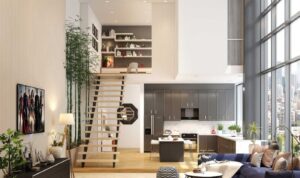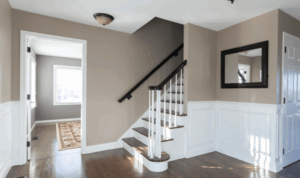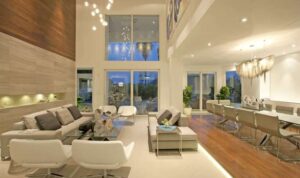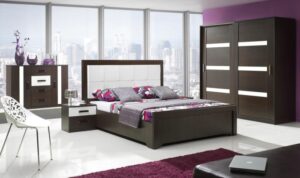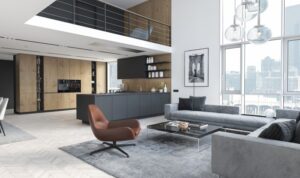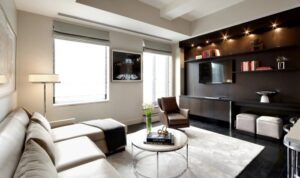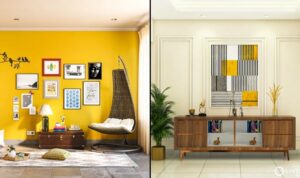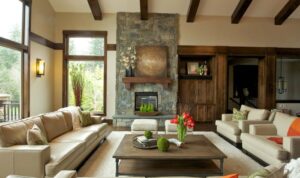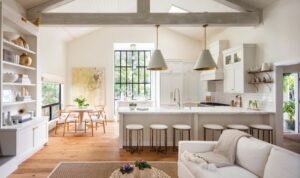House interiors are more than just the physical aspects of a living space; they are a reflection of personal style and comfort. From color schemes to furniture arrangements, each element contributes to creating a harmonious environment that exudes warmth and personality.
Join us on a journey through the world of house interiors, where creativity meets functionality in the most captivating ways.
Importance of House Interiors
House interiors play a crucial role in home design as they have the power to transform a living space into a comfortable and aesthetically pleasing environment. Well-designed interiors not only reflect the homeowner's personality but also contribute to enhancing the overall living experience.
Impact of Colors, Textures, and Lighting
The choice of colors, textures, and lighting can significantly impact the ambiance of interior spaces. Colors can evoke different emotions and set the mood of a room, while textures add depth and dimension. Proper lighting can enhance the functionality of a space and create a cozy atmosphere.
Elements of House Interiors
In designing house interiors, various elements play a crucial role in creating a harmonious and functional living space. Key elements include furniture, lighting, flooring, and wall decor. Each element contributes to the overall aesthetics and functionality of a space, making it essential to carefully consider their selection and arrangement.
Furniture
Furniture serves both a practical and decorative purpose in house interiors. The choice of furniture can define the style of a space, whether it's modern, traditional, minimalist, or eclectic. From sofas and tables to cabinets and shelves, furniture pieces not only provide comfort and convenience but also add character and personality to a room.
Lighting
Lighting is a crucial element that can transform the ambiance of a space. Different types of lighting, such as overhead lights, floor lamps, and wall sconces, can create various moods and highlight specific areas or features in a room. Proper lighting not only enhances the aesthetics of a space but also improves functionality and comfort.
Flooring
The choice of flooring materials, such as hardwood, laminate, tile, or carpet, can significantly impact the overall look and feel of a room. Flooring not only serves as a foundation for furniture and decor but also contributes to the acoustics and insulation of a space.
Different flooring materials offer varying levels of durability, maintenance, and aesthetics, allowing for customized design solutions.
Wall Decor
Wall decor, including paintings, photographs, mirrors, and wallpaper, adds visual interest and personality to a room. The arrangement of wall decor can create focal points, enhance the room's proportions, and reflect the homeowner's style and taste. By choosing the right wall decor pieces and layouts, a space can be transformed into a unique and inviting environment.
Color Schemes and Themes
When it comes to house interiors, selecting the right color schemes and themes is crucial in creating a cohesive and visually appealing space. Colors have the power to influence mood, evoke emotions, and enhance the overall atmosphere of a room.
Importance of Selecting Appropriate Color Schemes
Choosing the appropriate color schemes for different rooms can significantly impact the way a space looks and feels. For example, using warm tones like reds, oranges, and yellows can create a cozy and inviting atmosphere in living rooms or bedrooms, while cooler tones like blues and greens can promote relaxation and tranquility in spaces like bathrooms or home offices.
It is essential to consider the purpose of each room and the desired mood when selecting color schemes.
Popular Interior Design Themes
There are various popular interior design themes that homeowners can choose from to reflect their personal style and preferences. Some of these themes include:
Minimalism
Characterized by clean lines, simple furniture, and a focus on functionality.
Rustic
Embraces natural materials, earthy tones, and a cozy, inviting aesthetic.
Modern
Features sleek designs, neutral color palettes, and a minimalist approach to decor.
Bohemian
Incorporates eclectic patterns, vibrant colors, and a mix of global influences.
How Colors Influence Mood and Create Visual Interest
Colors play a significant role in influencing mood and creating visual interest in a space. For example, bright and bold colors like reds and yellows can energize and uplift a room, while soft pastel hues like blues and greens can promote relaxation and calmness.
Additionally, using contrasting colors or incorporating pops of color through accent pieces can add visual interest and personality to a space. It is essential to consider the psychology of colors and how they can impact the overall ambiance of a room.
Furniture Arrangement and Layout
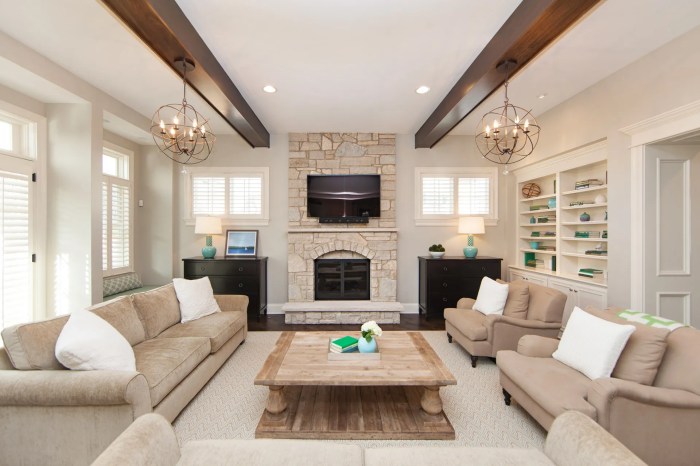
When it comes to house interiors, furniture arrangement and layout play a crucial role in optimizing space, creating a functional living environment, and enhancing the overall aesthetic appeal of a room.
Significance of Furniture Arrangement
Effective furniture arrangement is essential for maximizing space utilization and ensuring that the room feels balanced and harmonious. Properly arranged furniture can also define different areas within a room, such as seating areas, dining spaces, or work zones.
- Ensure that there is enough space for easy movement around furniture pieces.
- Consider the function of each area and arrange furniture accordingly.
- Balance the layout by distributing furniture evenly throughout the room.
- Utilize furniture to create focal points and enhance the overall design scheme.
Tips for Creating Functional Layouts
To create a functional and visually appealing furniture layout, consider the following tips:
- Start by measuring the room and mapping out the available space to determine the best furniture placement.
- Choose furniture pieces that are proportionate to the room size and scale.
- Place larger furniture items against the walls to open up the center of the room.
- Create conversation areas by grouping furniture together in a cohesive arrangement.
- Consider the traffic flow and ensure that there are clear pathways throughout the room.
Impact of Furniture Placement on Flow of Movement
The placement of furniture can significantly impact the flow of movement within a room. Properly arranged furniture can enhance the functionality of a space by allowing for easy navigation and creating a sense of openness.
- Strategically position furniture to promote smooth movement and accessibility.
- Avoid blocking doorways or pathways with furniture pieces.
- Consider the natural flow of movement within the room when arranging furniture.
- Use furniture to create visual pathways that guide the eye through the space.
Lighting Design
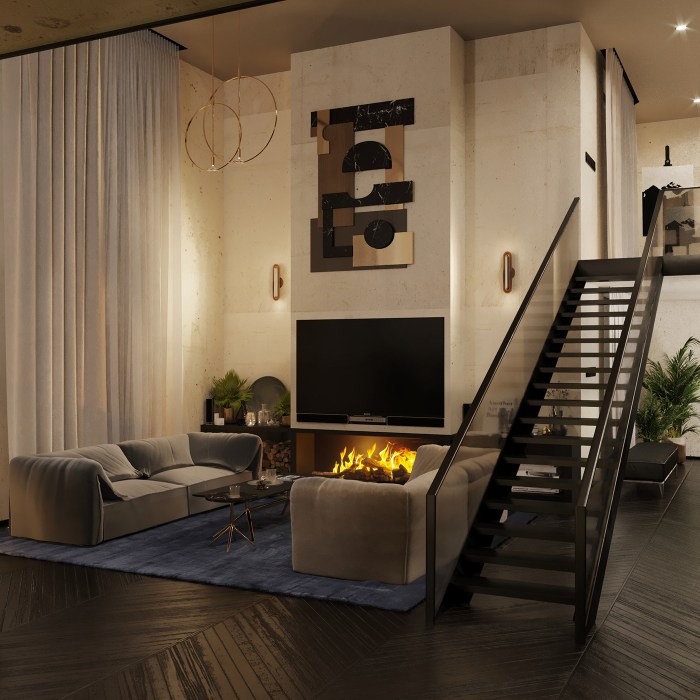
Lighting plays a crucial role in enhancing the ambiance of interiors, creating a welcoming and comfortable atmosphere. Proper lighting design can transform a space, highlighting architectural features, creating focal points, and influencing the overall mood.
Types of Lighting Fixtures and Applications
- Ambient Lighting: Provides overall illumination, usually from ceiling-mounted fixtures like chandeliers, recessed lights, or track lighting.
- Task Lighting: Focuses on specific areas for activities like reading or cooking, often achieved with table lamps, under-cabinet lights, or pendant lights.
- Accent Lighting: Highlights decorative elements or architectural features, such as wall sconces, picture lights, or spotlights.
Each type of lighting fixture serves a specific purpose and can be combined to create a layered lighting scheme.
Layering Lighting for a Well-Lit Space
Layering lighting involves combining different types of fixtures to create a balanced and visually appealing environment. Here are some tips for effectively layering lighting:
- Start with ambient lighting to provide overall illumination throughout the space.
- Add task lighting in specific areas where focused light is needed, such as over work surfaces or seating areas.
- Use accent lighting to highlight artwork, architectural details, or other points of interest in the room.
- Consider dimmers to adjust the intensity of light and create different moods for various activities.
Textures and Fabrics
Textures and fabrics play a crucial role in adding depth and visual interest to house interiors. They have the power to transform a space, creating a sense of warmth, coziness, and personality.
Mixing and Matching Textures
When it comes to mixing and matching textures, the key is to create a cohesive and visually interesting look. Combining different textures such as smooth, rough, shiny, and matte can add dimension to a room. For example, pairing a plush velvet sofa with a chunky knit throw can create a beautiful contrast that adds visual appeal.
Using Textiles for Warmth and Personality
Textiles like rugs, curtains, cushions, and throws are a great way to add warmth and personality to a room. A soft, fluffy rug can instantly make a space feel more inviting, while vibrant cushions can add a pop of color and personality.
Mixing different textiles in varying patterns and colors can create a dynamic and cozy atmosphere.
Final Review
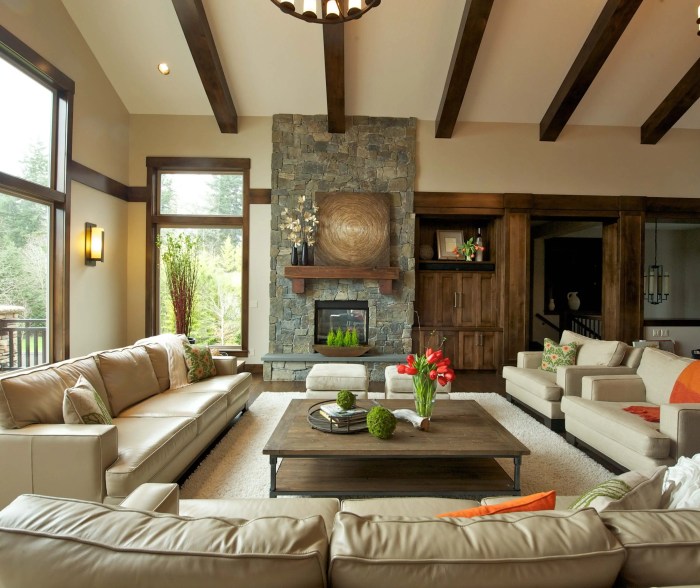
As we conclude our exploration of house interiors, it becomes evident that the key to a well-designed living space lies in the intricate details. By carefully considering elements like color schemes, furniture layouts, and lighting design, one can truly transform a house into a home that is both inviting and aesthetically pleasing.
Dive into the world of house interiors and unlock the potential to create a space that speaks volumes about your unique style and taste.
Questions and Answers
Why are house interiors important?
House interiors play a crucial role in home design as they contribute to the overall aesthetics and functionality of a living space, reflecting the personal style and preferences of the inhabitants.
How do colors influence interior spaces?
Colors can influence mood and create visual interest in a space. By choosing appropriate color schemes, one can enhance the ambiance and atmosphere of different rooms.
What is the significance of furniture arrangement?
Proper furniture arrangement optimizes space, improves flow of movement within a room, and contributes to the functionality and visual appeal of the space.
How does lighting impact interior design?
Lighting plays a crucial role in enhancing the ambiance of interiors. By layering different types of lighting fixtures, one can create a well-lit and inviting space.
Why are textures and fabrics important in interior design?
Textures and fabrics add depth to interiors, creating a cohesive and visually interesting look. They can also add warmth and personality to a room.

